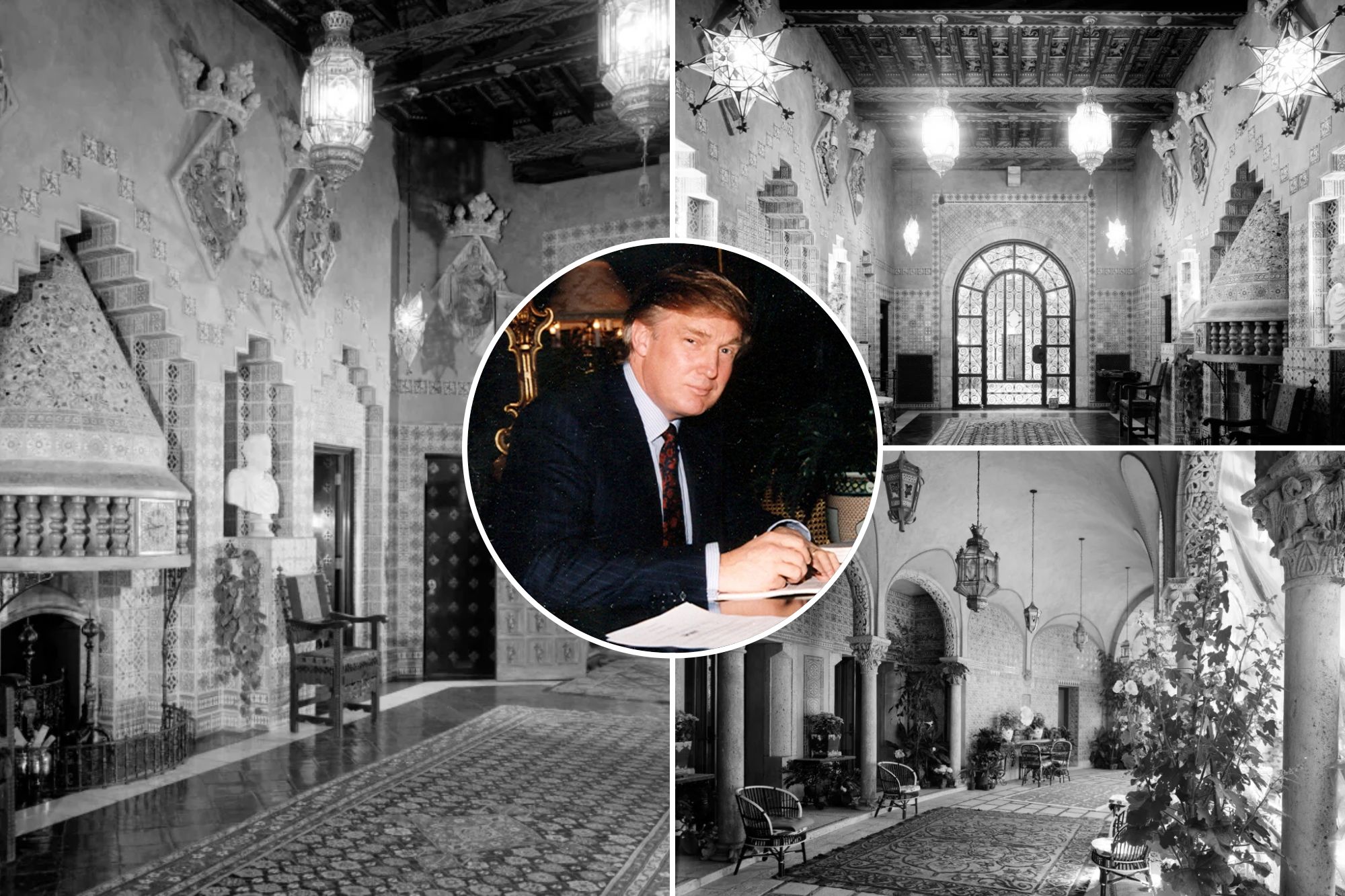
Long before it was Donald Trump’s lavish home base, the Mar-a-Lago estate was a shining example of Palm Beach’s glitzy, old-money charm.
This stunning Florida mansion on Southern Ocean Boulevard began as the dream of grain heiress Marjorie Merriweather Post, once the richest woman in America.
After inheriting her family’s fortune in 1914 – $20 million at the time (about $615 million today), thanks to the iconic Post cereal empire – After embarking on an epic hunt for the perfect location to build her luxurious sanctuary, on bottom landing in a prime location between the Atlantic Ocean and Lake Worth.
In the early 1920s, with architect Marion Sims Wyeth at the helm, Post and her then-husband, financier EF Hutton, began construction on the Mediterranean-inspired estate that would become Mar-a-Lago, meaning “The Sea in the Lake” in Spanish.
Between 1924 and 1927, the estate came to life in what was once a marsh. Spread over 20 acres, Mar-a-Lago showcased architectural wonders and exquisite details sourced from Italy, Spain, France and Cuba.
The 114-room mansion was an oasis of art and design, featuring a display of 36,000 Spanish art tiles, including tiles dating back to the 15th century. The main hall resplendent with a ceiling that nods to the thousand-winged ceiling of Venice, while chandeliers and intricate furniture illuminate the grand living spaces.
Post, who spent only part of the year at Mar-a-Lago, decorated each room with pieces as luxurious as they were rare.
“The architecture, sculpture, planning and craftsmanship that went into this magnificent estate cannot be duplicated today,” the estate’s website notes.
Outside, arches crafted from Dorian stone (beaten with Italian shells and fossils) gave the property a striking appearance. The exterior also boasted a hurricane-resistant design—no small feat in Palm Beach—anchored to a coral reef for protection.
As he loved to entertain and was famous for organizing wonderful events, from grand charity balls to intimate dinners. She even added a dance floor in 1961, indulging her lifelong love of square dancing. And for meals, her dining room was dazzled with black-and-white tiles sourced from a Cuban castle and could seat up to 30 at a table carved from semi-precious stones.
One room even housed her collection of Venetian glass and mirrors, gleaming like a scene from a Renaissance palace.
When Post died in 1973, Mar-a-Lago was briefly turned over to the US government, intended as a retreat for US presidents.
However, the property proved too costly to maintain, and it was returned to the Post Foundation a decade later.
Several treasures from the estate, including 18th-century French artwork and dining room pieces, were moved to Post’s Hillwood Estate in Washington, DC.
In 1985, Donald Trump stepped in and bought Mar-a-Lago, turning it into a members-only club a decade later — complete with beach access, a pool, spa and tennis courts.
“It is the last remaining property in Palm Beach that still contains its buildings and grounds in nearly identical form to its original conception,” according to the property’s website.
Trump modernized parts of the estate, bringing it back to reflect Post’s original vision while adding his own touches, including a refreshed ballroom and revitalized golf course.
Today, Mar-a-Lago stands as a well-known Palm Beach landmark, even becoming the center of controversy.
In 2022, the FBI raided the estate, seizing classified documents and sparking legal battles over the handling of government materials.
Recently, security descended on the area due to a second assassination attempt against Trump – this time near his golf club in West Palm Beach, just a short drive from Mar-a-Lago.
#Donald #Trump #bought #MaraLago #looked #ownership #Americas #richest #woman
Image Source : nypost.com